Fusarium wilt of cucumbers is a common phenomenon caused by infection of the plant's vascular system. The disease can lead to the death of sick plantings in a short time and spread to healthy bushes. In order to prevent such a sad outcome, you need to know the causes, symptoms, methods of treatment and prevention of the disease.
Content
What is fusarium wilting of cucumbers
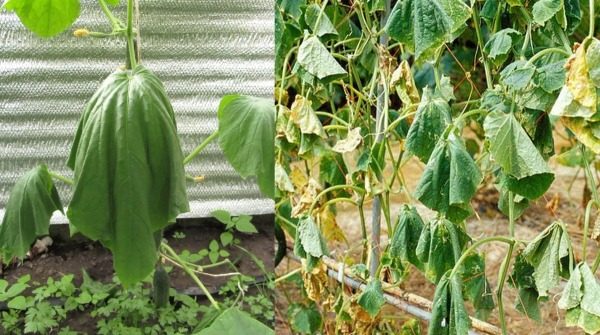
The main causative agent of fusarium wilting, or fusarium, is a pathogenic fungus from the genus Fizarium. Its spores spread in the soil, getting there through wind and water. The microorganism is resistant to low temperatures, therefore, remains viable in the winter. He remains active for 3-4 years.
The disease is characterized by rapid spread. Infection occurs through the root system of the vegetable. A harmful microorganism enters the vascular system, disrupting the functioning of the water supply tissue. In addition, it releases toxins, which also adversely affect the condition of the plant. As a result, a gradual death of tissues occurs, and then the culture fades and dies. Pathology is able to hit a culture at any period of the growing season. But more often, the pathogen is activated when the fruits are formed. It is at this point that the vegetables are especially weakened.
Reasons for development
Non-compliance with the rules of agricultural technology is the main reason for the entry of a pathogenic microorganism into the garden plot. The fungus is carried through contaminated land, seedlings, seeds, and weeds. Often the carrier becomes water from a reservoir, which is watered planting. The likelihood of infection increases several times in the absence of disinfection of seed, soil and greenhouses before planting seedlings.
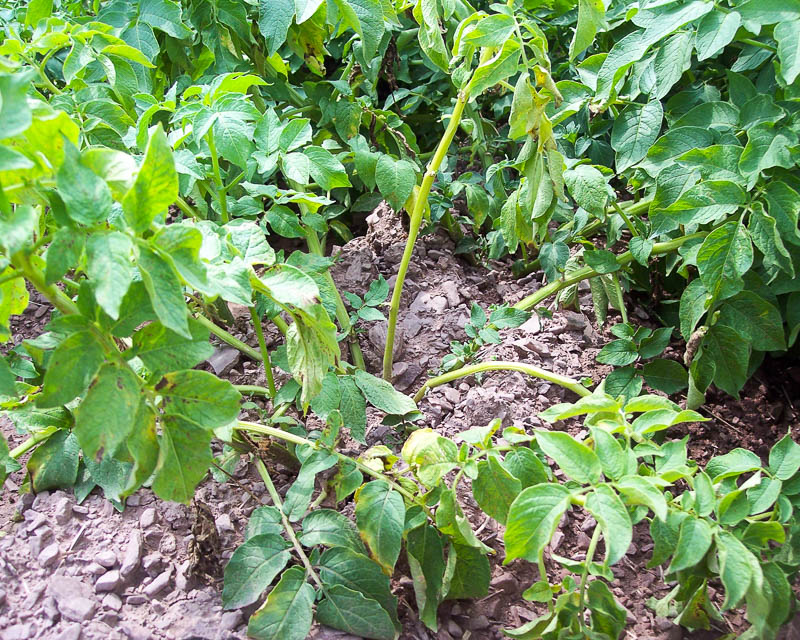 You may be interested in:
You may be interested in:The following predisposing factors contribute to the further spread of infection:
- increased acidity of the soil;
- culture overheating (critical temperature - + 35 °);
- sharp changes in night and day temperatures;
- lack of nutrients in the soil;
- plentiful watering with very cold water;
- high humidity in the greenhouse;
- invasion pests;
- excess nitrogen in the soil;
- microtrauma of the roots of a vegetable crop.
Temperature from 18 ° to 26 °, soil moisture in excess of 75% - the conditions under which fungal spores begin to multiply actively.
Characteristic signs of infection
In young plantings, the characteristic symptoms of Fusarium wilt are difficult to detect. Signs of the disease can be seen on an adult plant. These include:
- on seedlings there are signs of root and basal rot (the lower part of the culture darkens, the root becomes thinner);
- withering of the lower leaves, yellow spots gradually appear on all leaf plates;
- deformation of leaves - the edges turn yellow, dry, twist;
- cucumber stalk slows growth and curls;
- the ovary turns yellow, and then dies;
- fruiting is reduced or completely absent;
- in a sick culture, cucumbers with a bitter aftertaste are formed.
If you do not start treatment, then the disease progresses, spreads to all parts of the plant.Complete withering of the culture leads to its death. If the seeds have already been infected, then the germinated sprouts show rotting and a decrease in the rate of germination.
What is dangerous infection for a vegetable
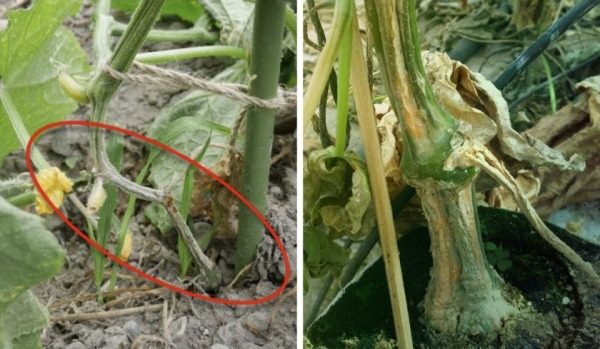
Many gardeners believe that fusarium is not dangerous for cucumbers. But this is far from the case. If the disease is not recognized in time and treatment is not started, then the culture stops growing. As a result, the ovaries cease to form, which affects the yield.
Treatment of Fusarium Wilt Cucumber
You can deal with fusarium wilting on cucumbers using various methods. Means of struggle are selected, taking into account the intensity of the damage to landings.
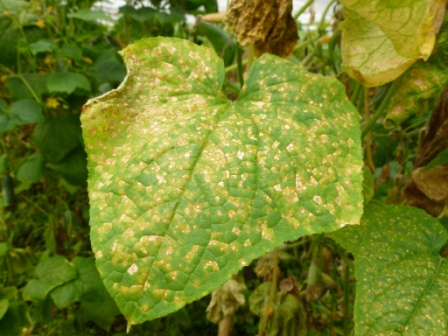 You may be interested in:
You may be interested in:Biological products
Preparations of this group are safe for humans and the environment, but often prove to be ineffective in case of severe damage. Therefore, they are used at the initial stage of the development of the disease and for prevention. You can successfully treat the disease with the help of the following popular biological products:
- Trichodermin;
- Baktofit;
- Vitaros;
- Fitosporin - M.
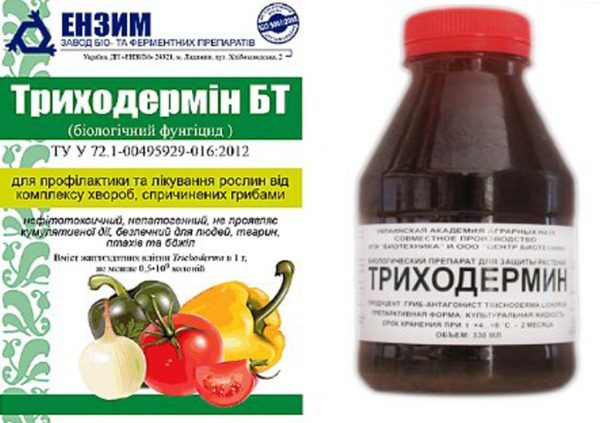 The composition of the preparations contains substances that destroy the main pathogen and stop the progression of the disease. Processing with drugs is carried out strictly following the instructions for use indicated on the package. Biological agents cannot be used simultaneously with chemical fungicides.
The composition of the preparations contains substances that destroy the main pathogen and stop the progression of the disease. Processing with drugs is carried out strictly following the instructions for use indicated on the package. Biological agents cannot be used simultaneously with chemical fungicides.
Chemicals
The causative agent of the disease is highly resistant to chemicals. Therefore, the effect of the use of such funds may be negligible. The most effective are systemic chemicals, which include benzimidazole and its derivatives. Among the most suitable remedies for the control of fusarium on cucumbers are:
- Fundazole;
- Topsin - M;
- Quadris;
- Benomil;
- Fundazim;
- Glyocladin;
- Arbotrin.
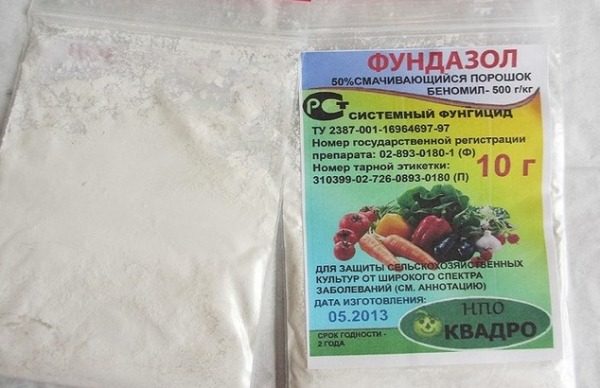
These drugs are used only by watering. To increase the vegetable's resistance to wilting, chemicals are recommended to process seeds, seedlings before planting.
Folk ways
To combat the disease, you can use the following folk remedies:- Milk solution. For cooking, you need 200 ml of milk, 50 g of grated laundry soap, 30 drops of iodine. The finished composition is processed stalks of culture.
- Garlic infusion. Chopped garlic (50 g) is diluted with a liter of water. The tool is left for a day. Then 9 l of water is added to the infusion. The finished composition is sprayed with planting.
- Solution with whey. 10 l of water will require 4 l of serum. Used for spraying vegetables, watering the soil.
- Onion husk product. On a bucket of water take 4 cups of onion husks. The composition can withstand 50 minutes on fire. Ready (cool) means spray plants.
- An effective tool is wood ash. Ashes process the surface of the soil and all parts of the culture.
Preventive actions
In order to prevent the appearance, spread of fusarium and verticillosis, first of all, you need to adhere to the rules of prevention. These include:
- Careful selection of seed for planting. You need to buy seeds only from trusted sellers. If necessary, they are disinfected with fungicides.
- Compliance with crop rotation rules. You can not plant cucumbers for several years in a row on the same plot of land.
- Preparation of soil and greenhouse in the fall. Greenhouse constructions are thoroughly disinfected with copper sulfate.Biological products or nitrogen-containing fertilizers are added to the soil. The land is deeply cultivated.
- Monitoring soil acidity. If the acidity is higher than 7 pH, then in the fall make dolomite flour or wood ash.
- Regular inspection of plantings for the presence of the disease. If diseased cultures are found, they are destroyed (burned).
- Compliance with the rules of care. Timely water the plant, weed and loosen the beds, eliminate harmful insects.
- In addition, you must not forget to fertilize and collect the fruits in a timely manner.
Fusarium resistant varieties
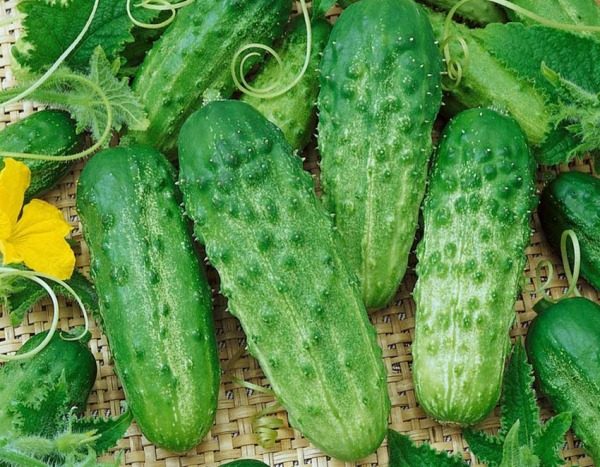
If last season on the plot cases of pathogen activity were recorded, then next year it is better to select resistant seeds for Fusariosis for sowing. The following hybrid varieties of cucumbers have increased immunity to the disease:
- Ryabinushka;
- Dunyasha;
- Raphael;
- Vocals;
- Knight;
- Sir;
- Zhukovsky;
- Obsky;
- Caprice;
- Hector;
- Bunny, etc.
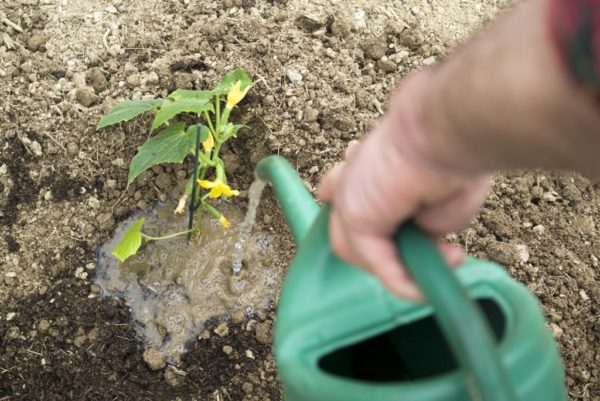
There are many methods to combat fusarium wilting of cucumbers. Timely use of protective equipment will help maintain the quality and quantity of the crop. So that the fungus does not appear on the site, and the disease does not affect the vegetable crop, it is important to follow the rules of prevention. Strong, healthy bushes are able to withstand the "invasion" of fungal pathology.




 Armenian cucumber with melon flavor: description and characteristics, reviews
Armenian cucumber with melon flavor: description and characteristics, reviews Do-it-yourself vertical beds for cucumbers: schemes, photos
Do-it-yourself vertical beds for cucumbers: schemes, photos Hollow cucumbers: reasons for the appearance of hollow, what to do
Hollow cucumbers: reasons for the appearance of hollow, what to do Which manure is best for cucumbers: application, how to breed
Which manure is best for cucumbers: application, how to breed